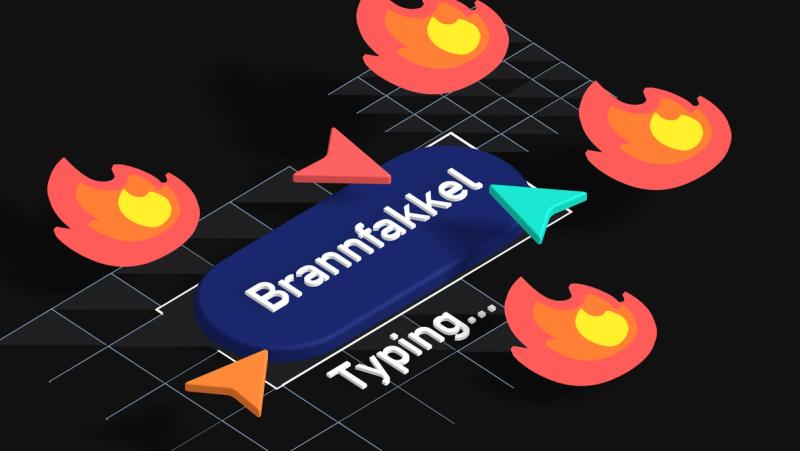Ragnhild thinks we should put detailed prototypes to rest, and rather get our designs out to the public faster.
4 min read
·
By Ragnhild Finsveen Liven
·
December 8, 2022

Brannfakkel (Norwegian): A torch, ment to be thrown. A statement ment to spark debate.
We want to build a culture in the design industry where we dare to talk about what is difficult – because there is no better way to advance the profession. In this series, originally posted on UXNorge.no in Norwegian, we are sharing 🔥 brannfakler 🔥. Do you agree? Disagree? Join the discussion!
Hi there! Did I catch you in the act of making an ultra-complex, clickable prototype in Figma? If that’s the case, it’s time to stop right now and think anew!
The intention is good
While studying design at university, we learned that a traditional design process usually starts with some preliminary research which – after some analysis – leads to a concept phase where we can think of solutions. Often, this concept phase culminates in the creation of a prototype and accompanying user test. The goal is to check whether our ideas are understandable and usable for our future users.
At first glance it’s easy to applaud this approach because we are working to limit risk by testing our ideas before we spend resources developing them. I’ll admit that the intention is good – but one doesn’t get very far with good intentions when they end up wasting our time and giving us unreliable insight.
A time thief
Because yes, we open Figma, switch over to prototyping mode, and start the hairsplitting process of creating micro animations and hover effects. After a long while, we unravel the ultra-complex flow charts necessary to make sure all buttons are clickable wherever and whenever. And when the job is done, we’re left with a false product which in all likelihood – despite all the hours spent – doesn’t work exactly as it should. The weeks have flown by.
This is where all the alarms go off… We’ve got to stop spending several weeks sitting alone and nitpicking on something that soon will gather dust in a digital drawer.
Our mission as designers is to create value – for the end user, the organization we work for, and society. Creating a false version of a service in Figma with just a small new feature isn’t value creation. If your team is organized well and you have an agile approach, you’re hopefully only testing out a small part of a bigger totality. If so, it’s a waste of time making a half-good pretend variant of the service in Figma just to test a small piece. Get it out in the real world at once! Learn from real interaction. Collect insight from real behavior to understand how the service is actually used.
Insight we can’t trust
Talking about insight. User tests, which is usually the end goal of prototyping, gives us a potentially false understanding of the usability of said prototypes. Here’s what we’re doing: We’re testing a fictional service – which doesn’t work as it should – in a fictional environment. Furthermore, we’re asking questions which are unavoidably biased by the pride and ownership we’ve grown for the masterpiece we’ve spent so many hours creating. And this affects us, whether we like it or not.
So let’s just bury the complex Figma prototype today and instead do our testing out in the actual service. Test where people interact in their natural environment without the disturbance from weaknesses in the prototype, bias, or the pressure of feeling observed. Today, we’ve got amazing opportunities to collect and analyze behavioral data from every interaction people have with the stuff we make.
Is it necessary?
Before I round off, I'd like you to reflect on the following: Is your design really so complex, groundbreaking, different, and revolutionary that you have to test it before people out there get to try it out? With all likelihood, the answer is “no”. Plenty of smart people have walked this path before you. And I’m pretty sure your design intuition is good enough to test ideas live. The “worst” that could happen is that you’ll need to iterate if the design didn’t work 100 % the first time around. And that’s a valuable lesson too!
So please: Don’t waste valuable time sitting alone and creating beautiful, complex prototypes in Figma. Work with your team, be agile, and test things live. Let’s kill the prototype.
🔥🔥🔥🔥🔥🔥🔥🔥🔥🔥🔥🔥🔥🔥🔥🔥🔥🔥🔥🔥🔥🔥🔥🔥🔥🔥🔥🔥🔥
What did you feel while reading? Did it spark something in you? Do you agree or disagree? Join the discussion on UX Norge's slack (Norwegian) or share this article with your colleagues and start a debate! Remember that the goal of Brannfakler is to start discussion!